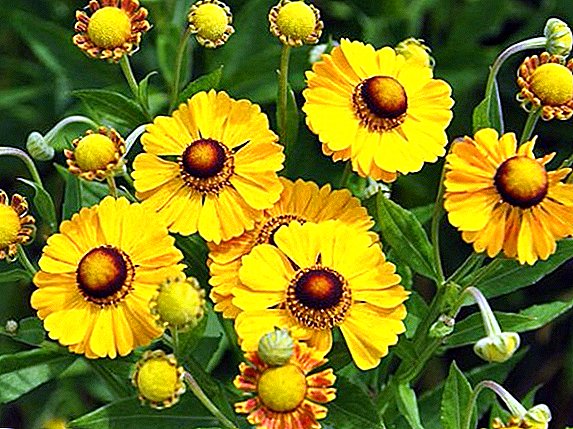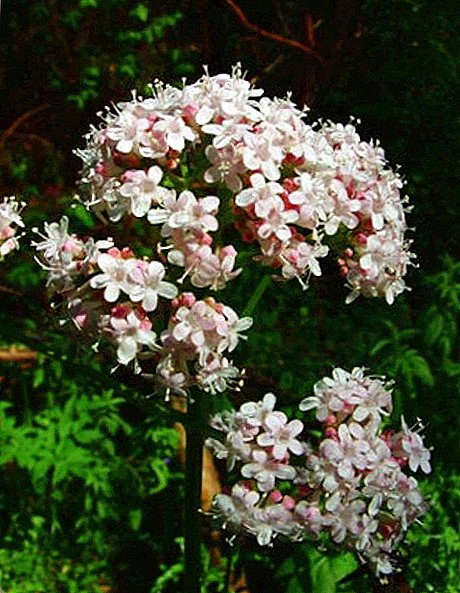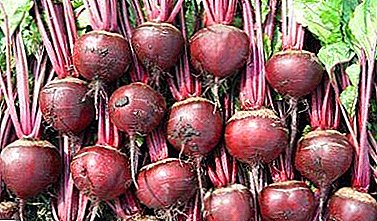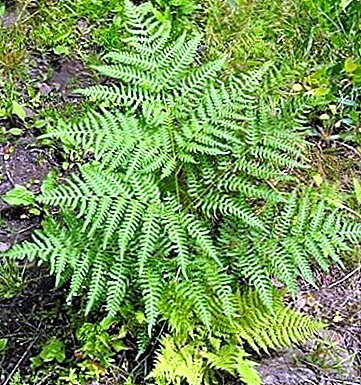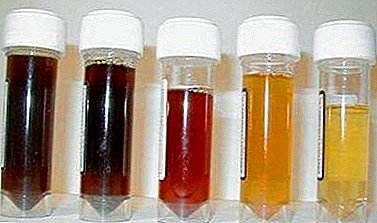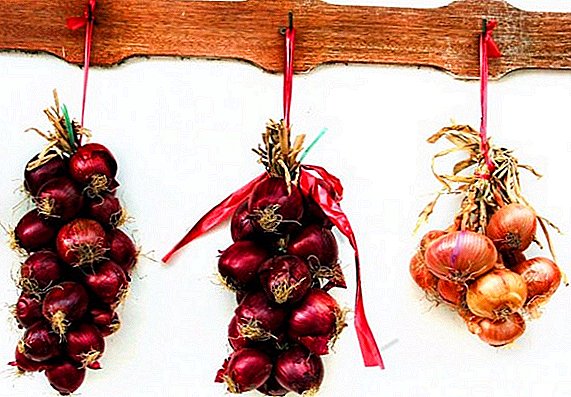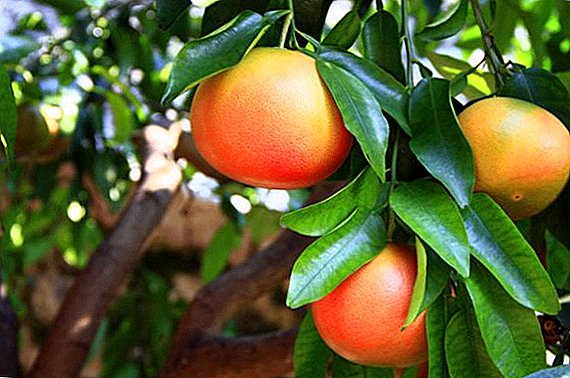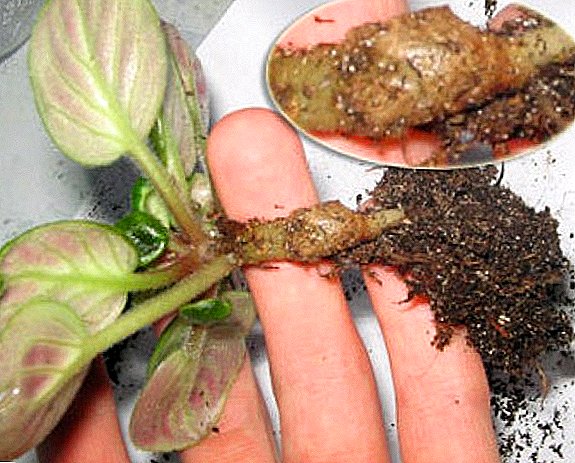 Nematodes are among the most common and dangerous pests. They not only lead to disease, death of plants, but also can cause harm to human health, animals. In this article we will look at the types of nematodes and what it is, as well as give basic recommendations on how to fight a nematode in the garden.
Nematodes are among the most common and dangerous pests. They not only lead to disease, death of plants, but also can cause harm to human health, animals. In this article we will look at the types of nematodes and what it is, as well as give basic recommendations on how to fight a nematode in the garden.
What does a nematode look like
First, consider who the nematodes are and what the nematode looks like. In total, there are about thirty species of these pests. Some of them are parasitic on plants, others affect the organism of animals, there are those that are dangerous to humans. In this article we will focus on plant parasite nematodes. They feed on the sap of plants, eventually leading to a slowdown in their vital activity and death.
These are very small worms ranging in size from 1 to 2 mm. Male individuals are slightly longer than females. The shape can be rounded, oval, filiform. At the ends of the torso slightly narrowed. These pests are also called roundworms, because in cross section the shape of their body resembles a circle.  Nematodes are white or beige. Feature of the structure of nematodes is a developed muscular-dermal bag. The body is covered with a dense elastic cuticle, which can be ringed or smooth, covered with epithelium from above. Under the skin are the longitudinal muscles. Parasites have a small head with movable lips. There are bristles on it, which function as organs of touch, and tiny eyes.
Nematodes are white or beige. Feature of the structure of nematodes is a developed muscular-dermal bag. The body is covered with a dense elastic cuticle, which can be ringed or smooth, covered with epithelium from above. Under the skin are the longitudinal muscles. Parasites have a small head with movable lips. There are bristles on it, which function as organs of touch, and tiny eyes.
Nematode eggs are round or oval. The color is white. Larvae develop inside them, white with a transparent rear part of the body.
Did you know? Nematodes have very well developed sense organs, especially the sense of smell. In addition, they are sensitive to the sun and always try to keep their heads in the direction of its rays. Sunny days are the most favorable for the reproduction of nematodes.
Nematode species with description
There are three types of plant nematodes:
- leafy;
- stem;
- root.
Sheet (strawberry) nematode
Leaf nematode has a filamentous body shape. In length, nematode worms reach 1 mm. Have a beige color. They are located on the foliage where they penetrate through the damage to the leaf plate or through the pores on their lower parts.
Signs of plant damage by parasites are:
- the appearance of brown spots on the leaves of irregular shape;
- leaves curl, weaken, lose their color;
- scapes swell;
- plant growth slows down;
- buds are affected by brown spots;
- thinned sheet plate;
- yield is significantly reduced:
- glossy spots are formed on the lower part of the leaves, which eventually acquire a dark red tint.

Important! Leaf nematodes die when exposed to bare soil. However, if they are on fallen leaves, continue to parasitize, breed, and creep on to other plants. Therefore, for prevention and control, it is necessary to regularly remove fallen leaves from the site.The most susceptible to parasites are plants such as:
- strawberries;
- chrysanthemum;
- nephrolepis;
- carnation;
- aster;
- dahlia;
- orchid;
- crassula.
Stem Nematode
Stem nematodes have a filamentary form of the body, reaching a length of 1 mm. Parasitic on stems, buds, flowers of plants. On the victim penetrate through the rhizome of plants. The damage to the culture with stemworms is manifested by the following symptoms:
- shoots stop growing;
- stems thicken, lose their color;
- buds turn pale, dry up;
- over time, the plant dries and dies.
 Despite the fact that pests love moisture, stem worms can maintain their vital activity, even staying for a long time on dry leaves and scales of plants. Spread with infected mustache, bulbs, tubers, cuttings, much less often through seeds or contaminated soil.
Despite the fact that pests love moisture, stem worms can maintain their vital activity, even staying for a long time on dry leaves and scales of plants. Spread with infected mustache, bulbs, tubers, cuttings, much less often through seeds or contaminated soil.Plants such as parsley, onion, garlic, tomatoes, radishes, and cucumbers are most susceptible to these parasites.
Did you know? The life span of worms can reach up to 2 years.
Root (gallic) nematode
The root nematode is the largest and reaches a length of 2 mm. From the previous species also differs in that it affects the nervous system of plants. It parasitizes plants on the rhizome, forming seals on them - galls.
 Plants affected by the soil nematode gradually fade, weaken, and stop growing. Foliage twisted. The roots located below the Gauls, no longer develop and die. At the same time, the root of the beard (thin threadlike roots) begins to grow abundantly. These roots do not contribute to the growth of culture, but only take away the nutrients from them.
Plants affected by the soil nematode gradually fade, weaken, and stop growing. Foliage twisted. The roots located below the Gauls, no longer develop and die. At the same time, the root of the beard (thin threadlike roots) begins to grow abundantly. These roots do not contribute to the growth of culture, but only take away the nutrients from them.
Important! It is important to distinguish between nematode galls and natural thickenings on the roots of certain plants, in which moisture is preserved. The latter have a white color, while the galls are yellow or brown.Gall nematodes are spread by contaminated soil, residues of roots, seeds, bulbs, tools, from nearby plants. Chrysanthemums, rubber plants, dracaena, begonias, lilies, aloe are most susceptible to these pests.
What is dangerous and how to detect a nematode in the garden
Nematodes are very dangerous pests, they multiply rapidly on plants and cause them to die. Parasites, getting into the tissues of plants, feed on their juice and take all the nutrients. In addition, in the process of vital activity, nematodes secrete toxic substances that poison crops and lead to excessive thickening of their stems and petioles. Plants afflicted with nematodes lose their color, look sluggish and exhausted, deform, and their yield is significantly reduced.
It is very difficult to detect nematodes because they are tiny in size. Leaf and stem nematodes can only be seen by examining leaves, buds and stems through a magnifying glass. Root parasites can be found by digging out a plant. They impersonate the formation of brown seals on the roots. In addition, when the plant is removed from the soil, small earthen lumps will fall from the roots. If you take such a lump and pour it with warm water, the worms will crawl out.
Important! Nematodes can cause irritation and allergic reactions on the skin, so work with the plant must be carried out with gloves.
How to fight a nematode
Nematodes are very difficult to fight. If the plant is severely affected, it is better to throw it away so that the pests do not move to another culture. Parasites can be controlled by the following methods:
- chemicals;
- biological agents;
- heat treatment.
- "Dimethoat";
- "Bi-58";
- Rogor;
- "Vidat";
- Nemafos.
Biological agents are good in that they are not toxic to plants and humans, do not bring harm. Their active ingredient are natural ingredients. One of the most effective biological preparations is Nematophagin. All preparations must be diluted, strictly following the instructions, in order not to harm the plants and not to burn them.
 If you are interested in more ways to get rid of nematodes in the soil, you should try heat treatment of the root system. To do this, the plant must be removed from the soil. The roots, which formed the Gauls, can be carefully cut. However, if there are many such roots, only the most damaged ones should be removed. If you remove a large number of roots, the plant may not survive. Then the rhizome should be lowered for five minutes into the water with a temperature of +50 degrees. If the temperature is from 45 to 50 degrees - the time of "bathing" should be extended to 10-15 minutes.
If you are interested in more ways to get rid of nematodes in the soil, you should try heat treatment of the root system. To do this, the plant must be removed from the soil. The roots, which formed the Gauls, can be carefully cut. However, if there are many such roots, only the most damaged ones should be removed. If you remove a large number of roots, the plant may not survive. Then the rhizome should be lowered for five minutes into the water with a temperature of +50 degrees. If the temperature is from 45 to 50 degrees - the time of "bathing" should be extended to 10-15 minutes.
After water treatment plants need to be planted in a new land. At the same time, it is recommended to add a little anti-mathematics drug to the soil. The soil should be loose, so that it is well penetrated by the air and not stagnant water. For this, the soil can be mixed with a small amount of sand or peat. Heat treatment is also suitable for controlling the leaf and stem nematode. The infected leaves are removed, the plants are sprayed with hot water and transplanted into a new substrate.
Did you know? Nematodes do not tolerate temperatures above 40 degrees. The larvae are more resistant and die only at a temperature of 50-55 degrees.
How to get rid of nematodes: prevention
Since getting rid of nematodes is difficult, it is better to take care of preventive measures. Such actions include the following:
- timely clearing of a site from weeds;
- cleaning fallen leaves;
- occasional tearing off of yellowed leaves on plants;
- periodic change of cultures in places, while observing the rules of rotation of cultures;
- regular soil loosening;
- no waterlogging;
- digging up land in the fall;
- use only healthy planting material.
Important! If the plants were severely affected and you removed them, you should definitely burn everything. Otherwise, the pests will move to another victim.Now you know what nematodes are, and this will be useful to you in the care of garden, garden and indoor plants. Pests multiply rapidly, and this will inevitably lead to the death of the plant. If nematodes were not detected in time - the plant is no longer save.



